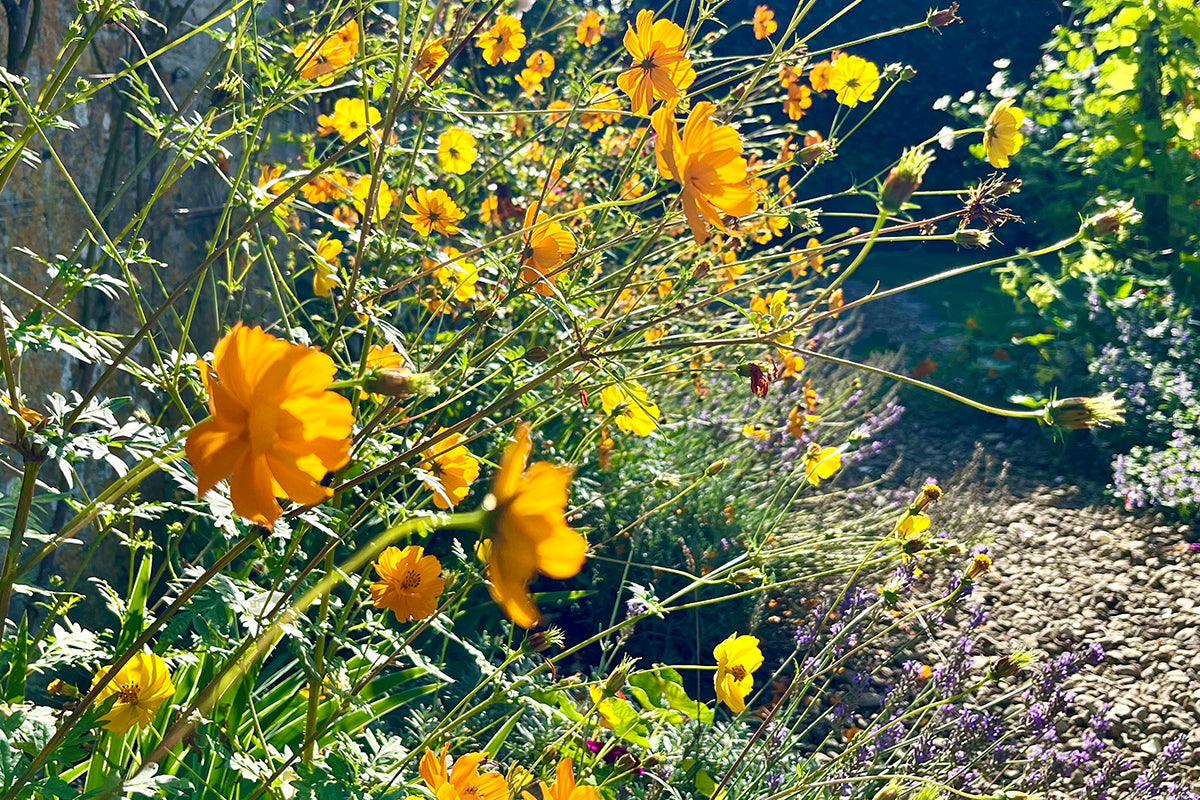Power of the cosmos

Cosmos are often recommended as the go-to annual flower for filling space and giving late season colour in the borders. Coming in a range of heights, colours, and with differing flower forms, Cosmos bipinnatus is probably one of the best selling items on a seed merchants inventory.
One Cosmos however rarely gets a mention and is often overlooked when it comes to late colour. We’ve grown it for several years and it has always been a hit with visitors to the garden. Cosmos sulphureus like its ‘bipinnatus’ cousin, comes in a range of colours and heights but the focus is on hot burning oranges, rich reds, and striking yellows, not the usual soft and genteel pastel tones we’ve become used to.
A native of Mexico and central America, it's not hardy enough to make it through our winters but attains full height from a spring sowing going on to flower profusely well into late September and October if the weather is kind. It even sets seed for those that want to collect some for the following year. We have it in our south facing border tight up against the cottage, where it revels in the heat and the long daylight hours.
One tip we have - don’t overfeed them and don’t plant into soil that is too rich. The results will be plenty of foliage but none of the stunning flowers that we’ve come to love so much at this time of the year.











